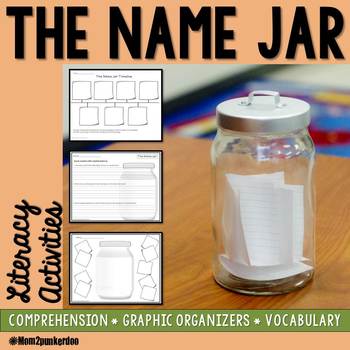Hey, it's Beth from Adventures of a Schoolmarm. The autumn weather has finally set in here in southwestern Ohio, and I couldn't be happier! I love everything about fall... hoodies, campfires, and chilly weather are my faves!
This also means that Columbus Day is right around the corner, and teaching about Columbus can be, well, tricky. The more I have learned about him as I have grown older, the less I like him as a human being, and yet there he is, celebrated every second Monday in October. And while the whole story about Columbus is just TOO MUCH for upper elementary students to be exposed to, I do think it is important to teach them the facts without filling their heads with myths.
The first thing I like to have students do is brainstorm everything they think they know about Columbus. In many cases, they think they know a lot about him, but they actually believe a lot of inaccurate information. I like to have them record it on this graphic organizer, then collect it to save for later.
Next, I focus on correcting the main myths that surround Columbus. I love to expose the kids to the different myths through a variety of texts... a non-fiction coloring book, a class reader's theater play, and some non-fiction comprehension passages.
MYTH: Columbus set sail to prove the earth was round because everyone else believed it was flat.
FACT: Columbus did not need to prove the earth was round because educated people already knew it.
When Columbus wrote in his journals about the native people, he described them as kind, trustworthy, and hardworking. He was surprised by how generous they were, willing to share everything they had with others. Columbus used their peaceful natures to his advantage. He seized their land and made them work in his gold mines. He even forced many of them to return to Spain on his ships so he could sell them into slavery!
As you can imagine, most of this information is pretty new to the kids, and they have a lot to say about it! After our unit on Columbus, I give them time to revisit their prior knowledge. They are usually really surprised to see how much their schema has changed.
Would you like to have your students compare their "Before and After" knowledge about Christopher Columbus? You can download it for FREE here. If you are interested in kid-friendly academic materials about the real Columbus story, I have a 70+ page unit now available in my store! Check it out here.
I'd love to hear about some of your favorite ways to teach about Christopher Columbus in the comments below. See you next month!
Pythagoras was the first person to hypothesize that Earth was round... nearly two thousand years before Columbus was born! In fourth century B.C.E., Aristotle used his observations of space to prove this was true. During a lunar eclipse, Aristotle noticed that the earth cast a shadow on the moon... and that shadow was round! In other words, it was common knowledge that the earth was round by the time Columbus set sail.
MYTH: Columbus was the first explorer to discover America.
FACT: Columbus never even landed in North America.
Nearly 500 years earlier, a Viking explorer named Leif Erikson did land in North America. He and his crew landed in modern day Canada. John Cabot, an explorer from England, also landed in North America shortly after Columbus's voyage to the New World. So why isn't John Cabot as recognized as Columbus? Early American colonists were looking for a hero to celebrate, but John Cabot claimed land in the name of England. Since the early colonists were at war against the British, Columbus was a more neutral choice... even though he never set foot in North America during any of his four voyages!
MYTH: Columbus was kind to the native people.
FACT: Columbus turned the native people into slaves.
When Columbus wrote in his journals about the native people, he described them as kind, trustworthy, and hardworking. He was surprised by how generous they were, willing to share everything they had with others. Columbus used their peaceful natures to his advantage. He seized their land and made them work in his gold mines. He even forced many of them to return to Spain on his ships so he could sell them into slavery!
As you can imagine, most of this information is pretty new to the kids, and they have a lot to say about it! After our unit on Columbus, I give them time to revisit their prior knowledge. They are usually really surprised to see how much their schema has changed.
Would you like to have your students compare their "Before and After" knowledge about Christopher Columbus? You can download it for FREE here. If you are interested in kid-friendly academic materials about the real Columbus story, I have a 70+ page unit now available in my store! Check it out here.
I'd love to hear about some of your favorite ways to teach about Christopher Columbus in the comments below. See you next month!














































0 comments:
Post a Comment